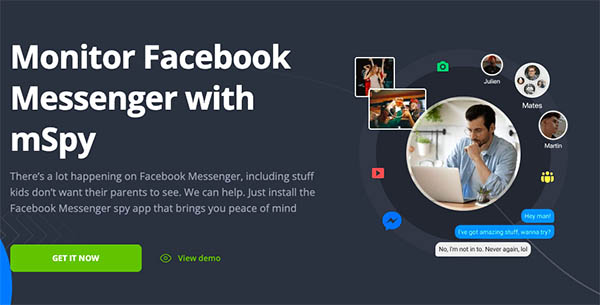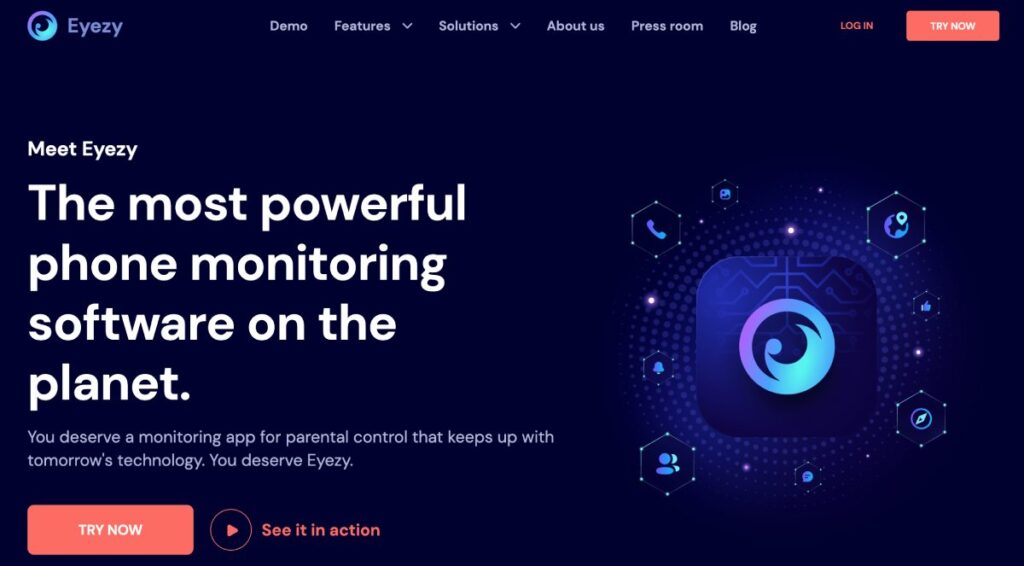

Monitoring children’s activities on the Internet has become very important, especially in the modern world. The most common question is How to look at child’s Facebook without them knowing it because many parents wish their children did not enter Facebook Messenger.
Some of the risks that children are exposed to include cyberbullying, exposure to unwanted content, and risks posed by strangers online. Thus, increasing one’s supervision of their interactions on the web may very effectively minimize these risks.
It is, therefore, important for parents to look for how to see messages on kid Messenger. This helps them monitor their kid’s digital activities without intruding into their privacy. This enables them to remain connected to their kid’s digital lives without violating them.
Various tools and applications can help because children must also learn to interact safely online. Overhauled monitoring tools such as mSpy make tracking kids’ online activities possible without compromising their trust or security.
Understanding Parental Monitoring
In the current generation, parents play an important role in ensuring that their children do not fall victim to the evils of the Internet. Many parents want to find out how to get into child’s Facebook Messenger to address such concerns as cyberbullying or lewd images. All these issues speak to the importance of being concerned with a child’s participation in this social space.
Technology has also made it quite easy to monitor children, employing a monitoring application that is secretly available on Facebook. Such a Facebook monitoring app proved useful without invading children’s privacy, allowing them to continue having fun online safely. Therefore, parents should take time to browse the internet to ensure they provide their kids with safer spaces in cyberspace.
Tools and Apps for Monitoring
When thinking about how to log into another Facebook account for monitoring purposes, some methods will help parents protect their children on social networks. Here are three top Facebook monitoring apps that stand out:
mSpy
mSpy is among the most popular Facebook monitoring apps that offer extended possibilities and is very easy to use. It is especially popular among parents who prefer powerful and effective monitoring features with little to no configuration.
- Reading Messages: Gives full permission to all incoming and outgoing messages on Facebook Messenger.
- Tracking Activities: It monitors media, phone call logs, and most activities.
- Location Tracking: It has the capability for real-time location tracking.
- Stealth Mode: Runs behind the scenes without informing the user.
Eyezy
Eyezy is another app that parents can opt for to monitor their child’s activities online. It uses modern functionality as a base and provides a friendly interface, which would make even a complete nerd navigate through it easily.
- Message Monitoring: Allows users to read messages on Facebook, Messenger, and other social media platforms.
- Activity Tracking: It monitors tracks’ history, the usage of applications, and multimedia files.
- Real-Time Alerts: Provides alerts regarding suspicious actions.
- User-Friendly Interface: The GUI is simple and clear, and settings can be changed without complications.
FlexiSPY

The features provided by FlexiSPY are quite powerful to provide complete spying capabilities. Its many features make it ideal for parents who want to monitor their child’s activities online.
- Message Interception: Saves messages from Facebook Messenger and other chat applications.
- Call Recording: It can record phone calls for future viewing.
- Remote Control: Enables control of the device’s camera and microphone from a distance.
- Invisibility Mode: Works secretly and makes sure that the user does not have any idea.
Among these options, mSpy is among the most popular due to its efficiency, function richness, and stealth mode. The tool will especially benefit parents who want to learn how to get into child’s messages on Facebook.
Although Eyezy and FlexiSPY have unique features and capabilities, there are many reasons why mSpy is preferable for many parents: it has numerous strong monitoring features, and the application is very easy to use.
Applying these tools responsibly contributes to children’s protection online while preserving trust. Remember the ethical issue of logging into someone’s Facebook without permission and ensure that children are informed about their online lives.
How to Log Into Your Child’s Facebook Messenger
Thus, if you need to learn how to log into child’s Facebook without them knowing, you could use some of these methods to help you out for the child’s safety. Below are some guidelines that can help guide you through the process.
Preparations
- Getting Temporary Access to Your Child’s Device
- Make sure the device is connected to the internet.
- Ensure you have the right login details for Facebook, namely your email and password.
Setting Up Access
- Switch on your child’s device, and then launch the Facebook application.
- Log out of any social network accounts you signed in to if required.
- Please input your child’s login details correctly.
- Go to settings and ensure that notification on login alerts are turned on (you can turn off if on).
- Install a Facebook monitoring app such as mSpy on your child’s device. This app will enable the monitoring to be done constantly without logging in repeatedly.
- Follow the app’s installation instructions. Often, this implies granting permission to use the device.
- Once installed, the app will unnoticeably work in the background so that you can track your child’s messages.
From the above steps, parents will be able to know how to set up kids Messenger. Nonetheless, one should not forget that such measures should be employed appropriately; trust and safety can be gained only through transparency.
Alternatives to Direct Access
Even though knowing how to log into another Facebook account may be helpful, there are other ways to keep track of a child’s activity on the site. These ensure that safety and trust are enhanced, reaching their intended goal.
- Set Up Privacy Controls
To reduce the visibility of your child’s profile, you can directly change the settings on Facebook so that only your child’s friends can post on your child’s timeline and wall. This helps to reduce the risk of coming across wrong materials and people with bad intentions online.
- Educate on Safe Online Behavior
Teach children the importance of adopting safer use of the internet. Explain the risks associated with sharing personal details and how to detect fraudulent behaviour.
- Encourage Open Dialogue
Encourage children to discuss their experiences on the internet freely. Inquire more about their experiences and pay attention to what they say. This creates trust and enables children to feel free to report any difficulties they may encounter.
These approaches complement how can I monitor my child’s Facebook Messenger plans as a balanced way to protect your child online without spying methods.
FAQs
To learn how to spy on a child’s Messenger without him/her knowing, use Facebook spy apps like mSpy. These apps enable silent monitoring of messages and activities without informing the user.
Ethical issues are also an issue of concern when figuring out ways to hack someone into his or her Facebook account without a password. Instead, encourage open dialogue and set up privacy controls.
To get into a child’s Messenger, use monitoring tools, such as mSpy or Eyezy, which grant access to messages and remain invisible in the background.
Conclusion
Monitoring your child’s online activity in this digital age is quite important, but maintaining trust and respect is as important as monitoring. A discreet way to watch their Facebook Messenger activity is to use Facebook monitoring apps such as mSpy.
If you’re wondering how to look at child’s Facebook without them knowing, mSpy offers a reliable solution.
However, always balance observation, honest dialogue, and education on responsible online behaviour. Maintain a trustworthy relationship with your child while being proactive and knowledgeable about safeguarding their digital well-being. This strategy promotes appropriate internet use while assisting in their protection.





